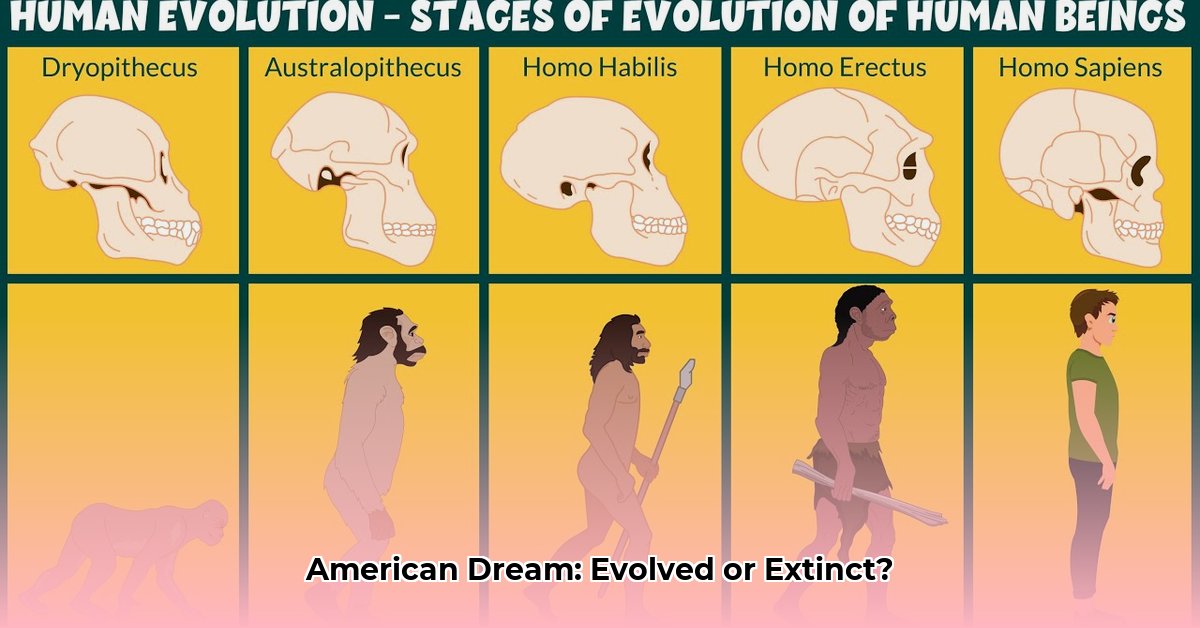The American Dream, often envisioned as a house with a white picket fence and a successful career, has evolved significantly over time. Understanding this evolution, from the post-war boom to the present day, is crucial to grasping the nation’s shifting views on success and happiness. This involves examining how the Civil Rights movement and the internet age have reshaped the American Dream, particularly concerning the growing wealth gap and the need for greater accessibility for all. For more on American identity, see this insightful article on American spirit and patriotism.
Evolution of the American Spirit in Modern Times: A Shifting Landscape of Opportunity
The American Dream, the idea that hard work leads to a better life, a bigger house, and financial security, has been a guiding principle for generations. However, this narrative has changed considerably, and understanding its evolution provides a clearer picture of the nation’s identity today, prompting the question: Is the American Dream still attainable for everyone?
Initially, the pioneers envisioned a nation founded on liberty and equality, where anyone could climb the social ladder through hard work. Yet, this vision often excluded marginalized groups, rendering the dream accessible to only a select few.
The post-World War II boom introduced shiny new cars, sprawling suburbs, and a surge in consumerism. The American Dream shifted from ideals to material possessions, like homeownership and appliances, symbolizing success. While bringing prosperity, this shift emphasized material wealth over social justice, making many question its universal applicability. In 1956, the average new house cost around $12,000, making homeownership more accessible for many middle-class families. This fostered a culture of consumerism that impacted perceptions of success.
The Civil Rights Movement exposed the hypocrisy of the American Dream, revealing it was a sham for many due to systemic racism and inequality. This forced the nation to confront its own prejudices. While laws were enacted, ingrained biases and unequal opportunities persisted. Progress was made; however, it was incomplete, continuing to this day. Historians note that “Systemic racism and inequality had kept African Americans and other minorities from even starting the race.”
The Information Age promised equal opportunity through technology but instead created new divides. The digital divide, the growing gap between rich and poor, and a changing job market cast shadows on the attainability of the American Dream. Social media, a double-edged sword, reflected both unity and division. Did technology level the playing field or widen the cracks? The answer lies somewhere in between.
Today, the American Dream reflects diverse experiences and aspirations. Immigration continues to shape the nation, bringing new perspectives and challenges. Globalization and international competition add complexity. The American Dream is an evolving narrative, highlighting that the traditional definition of the American Dream no longer applies in contemporary society.
Addressing inequality is crucial to making the American Dream a reality for everyone. This requires a comprehensive approach:
- Policymakers must invest in affordable housing, education, and job training programs and strengthen social safety nets.
- Businesses should prioritize diversity and inclusion in hiring and offer competitive wages and benefits.
- Individuals can participate in their communities and support local businesses.
The American Dream remains a powerful ideal, but its meaning and accessibility are constantly changing. By confronting past and present challenges, we can create a future where the promise of the American Dream is within reach for all, meaning we need to constantly check how has the American Dream changed for marginalized communities?
How Has the American Dream Changed for Marginalized Communities?
The traditional American Dream, upward mobility through hard work, is increasingly unattainable for many marginalized communities. Systemic inequities, including racial bias in housing, employment, and education, create significant barriers. Income inequality exacerbates existing disparities, widening the gap between the wealthy and the poor. The very definition of the American Dream emphasizes materialism over broader social justice goals, further marginalizing those lacking resources. Collective action, policy changes, and individual empowerment are crucial in addressing these issues.
The Post-War Boom: A Promise Unfulfilled for Many
The post-World War II era witnessed economic growth in the U.S., with suburbanization and homeownership becoming symbols of success. However, this prosperity remained out of reach for Black Americans and other marginalized groups. Redlining, discriminatory housing policies, and limited job opportunities created a contrast between the idealized American Dream and their realities. For them, the dream often looked less like a suburban home and more like a struggle against prejudice, raising the question: Did the post-war boom truly benefit all Americans equally, or did it reinforce existing inequalities?
The Civil Rights Movement: A Fight for Equality and Inclusion
The Civil Rights Movement of the 1950s and 60s challenged systemic racism, exposing the disparities between the American Dream’s promise and the lived experiences of African Americans. Legal victories dismantled segregation, but inequalities persisted. Access to quality education, fair employment, and equal housing remained elusive. Civil Rights activist Fannie Lou Hamer famously spoke about the need for America to live up to its ideals, stating that she was “sick and tired of being sick and tired” of the inequalities she faced.
The Information Age: New Gaps and Persistent Challenges
The information age brought a new emphasis on technological skills and education, creating opportunities while exacerbating inequalities. Access to technology and quality education became critical for economic success, leading to digital divides that left marginalized groups behind. The American Dream now required not only hard work but also resources many did not have, and how has the American Dream changed for marginalized communities during this time.
The 21st Century: Navigating Income Inequality
Today, the American Dream remains complex and contested. Income inequality continues to rise, disproportionately affecting marginalized communities. Affordable housing is a challenge, as is access to healthcare and education. The dream centered on homeownership now seems unattainable for many, especially those burdened by debt or facing discrimination. What does it mean to achieve the American Dream amid such inequality?
Moving forward requires policymakers to implement interventions aimed at reducing income inequality, promoting affordable housing, and ensuring equal access to education and healthcare. Businesses must foster inclusive workplaces and recruit from diverse talent pools. Individuals can support organizations advancing social justice and champion inclusivity in their communities. Organizations like the National Urban League and the NAACP are actively working to address these disparities.
Redefining the American Dream: How It Changed Through the Years in the Face of Economic Disparities
The traditional American Dream of upward mobility is increasingly challenged by income inequality linked to both domestic and international policies. The post-WWII era saw relative economic equality, contrasting sharply with current trends. The concentration of wealth among the top 1% has coincided with stagnation or decline for many. Understanding the historical context is crucial to grasping present challenges, and solutions require multifaceted approaches involving policymakers, businesses, and individuals.
The Post-War Boom: A Shared Prosperity
The years following World War II witnessed economic growth where the American Dream seemed within reach. Strong unions, social programs, and a booming economy fostered shared prosperity. In fact, during the 1950s, the top marginal tax rate was over 90%, contributing to a more equitable distribution of wealth. Was this an exception or a fleeting moment in American history that could inspire the future? Economist Thomas Piketty’s research highlights the correlation between high top marginal tax rates and reduced income inequality during this period.
The Rise of Inequality: Cracks in the Foundation of Opportunity
The latter half of the 20th century saw globalization, technological advancements, and changes in tax policies reshaping the economic landscape, widening the gap between the rich and the poor thus, has the American dream changed for marginalized communities? Did this mean the American Dream was becoming a myth for many, or just something different? The Economic Policy Institute has extensively documented the rise of income inequality in the United States since the 1970s.
The Information Age: Winners and Losers in the Race for Prosperity
The rise of the internet and technology created new opportunities but also exacerbated existing inequalities. The “winner-takes-all” mentality intensified. While some thrived, others fell behind. The cost of college tuition, for example, has increased by over 1,200% since 1980, creating significant barriers to upward mobility for many. Data from the National Center for Education Statistics illustrates the dramatic increase in college tuition costs over the past four decades.
Charting a New Course: Towards an Inclusive and Equitable Future
Addressing the challenges to the American Dream requires a comprehensive approach, involving policy changes, business practices, and individual actions. We need a renewed focus on education, job training, and affordable healthcare. Policies promoting fair wages and worker protections are essential. Investing in infrastructure and addressing climate change will contribute significantly to long-term economic stability. Organizations like the Roosevelt Institute advocate for policies that promote economic equality and opportunity.
How Immigration Shaped the American Dream: A Multigenerational Perspective of Cultural and Economic Integration
Each immigrant group brought unique skills, cultures, and aspirations, greatly enriching and reshaping the nation’s identity. Economic anxieties, often fueled by misinformation and political rhetoric, are closely tied to perceptions of immigration’s impact. Generational differences in understanding the American Dream are significant, with younger generations often having a more diverse and inclusive view. Thus, how has the American dream changed for marginalized communities? Policies addressing immigration must consider both economic realities and the human cost of integration challenges.
The Post-War Boom and the Rise of Consumerism: Integrating New Communities
The post-World War II era saw a surge in economic prosperity and a specific vision of the American Dream, yet the narrative often overlooked the contributions of European immigrants to this boom. During this time, immigration quotas were gradually relaxed, allowing for a more diverse influx of people seeking opportunity. How did
- Your Perfect Bento Box Bag For Fresh And Tidy Meals - December 2, 2025
- Korean Meal Prep Made Easy For Delicious Weekday Meals - December 1, 2025
- Korean Food Meal Prep Makes Flavorful Weekday Meals Simple - November 30, 2025










